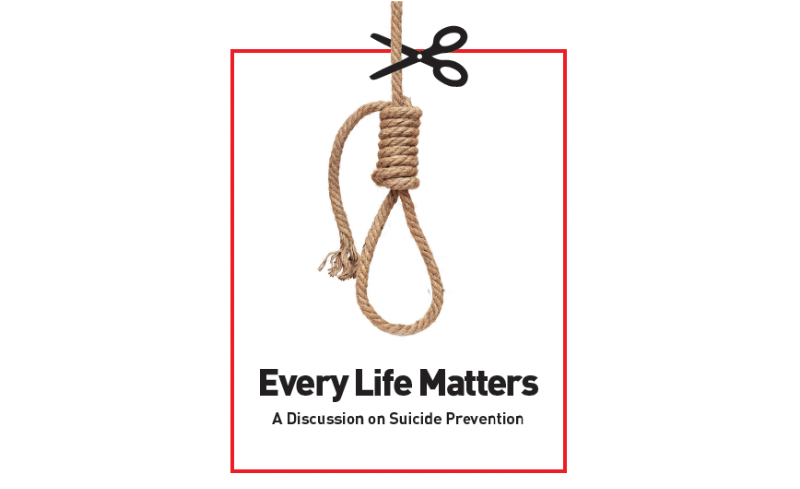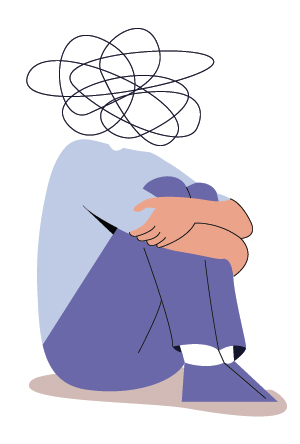
Prime Magazine August/September Issue
Have you ever experienced thoughts of suicide or ending your life? Almost everyone has had fleeting thoughts of self-harm or suicide at some point in their lives. These thoughts, known as suicidal ideation, can arise in anyone experiencing emotional distress, regardless of their background or socio-economic status. However, these thoughts can persist for some individuals, and become more frequent and intense. This can be concerning, and it is important to seek help if you or someone you know is experiencing suicidal thoughts.
Suicide, defined as self-inflicted harm with the intent to die, is a pressing global public health problem. According to the World Health Organisation (WHO), there are over 700,000 reported deaths from suicide each year. And based on statistics from the Samaritans of Singapore (SOS), there were 476 suicides reported locally in 2022, which is a 25.9% increase from the previous year, and the highest number in over 20 years. Suicide rates are highest among the youth and elderly. In fact, suicide was the leading cause of death among those aged 10-29 in the past year, and males accounted for 66.6% of all suicides in 2022.
With an average of more than one suicide a day in Singapore, and many more who contemplate this drastic action, the rising number of suicides remains a big concern. The repercussions of suicide can be long-lasting for families and communities. Fortunately, suicide can be prevented, and it is pertinent to understand the myths and risk factors, as well as to recognise the warning signs to prevent suicide.
Myths and facts about suicide
Myths and misconceptions about suicide can have detrimental effects on individuals and society. These misconceptions contribute to stigma and misunderstanding, and are major Every Life Matters A Discussion on Suicide Prevention barriers to preventing suicide. Therefore, it is essential to address these myths, dispel misconceptions and promote accurate understanding to break down the barriers for seeking help.
Here are some common myths about suicide:
-
MYTH 1: Asking someone about suicide encourages him/her to become suicidal.
FACT: Openly discussing suicide does not increase its likelihood. Instead, it allows one to verbalise his/her struggles, find alternative solutions to his/her existing circumstances, and seek help. Asking someone about suicide also shows that you care for him/her and want him/her to live. -
MYTH 2: Suicide only happens on impulse and cannot be prevented.
FACT:
Suicide does not always happen without warning. It can be a process of ideation, plans and making attempts. Thus, it is important to know the common risk factors and warning signs. -
MYTH 3: Suicidal people want to die and cannot be helped.
FACT: Suicidal individuals are usually ambivalent about death. They only consider suicide when it seems like the only way out of their emotional pain. Providing support and mental healthcare intervention can make a significant difference and give hope to recovery. -
MYTH 4: Suicide only happens to those who appear moody, sad or depressed.
FACT: Suicide does not have a “look” and can happen to anyone. Individuals who appear to be functioning well can also be suicidal. Hence, monitoring for any unusual emotional/behavioural changes or any other warning signs is critical.
Risk factors

Risk factors are characteristics that make an individual more likely to consider, attempt or die by suicide.
Often, suicide occurs in the context of mental health disorders, such as a major depressive episode or as a result of substance use.
Yet, the US Centres for Disease Control and Prevention (CDC) highlights that about 54% of people who died by suicide had no known mental health disorders as they were undiagnosed or their difficulties were not noticed by people around them. Some other risk factors for suicide include:
-
Previous suicide attempt(s) or a family history of suicide.
-
Serious or chronic health conditions.
-
Distressing life events and losses (e.g., breakup, academic failures, job loss and death of loved ones).
-
Prolonged stressors (e.g., bullying, abuse and financial difficulties).
-
Social isolation and little support network (e.g., pandemic).
-
Lack of access to mental and physical healthcare.
-
Stigma and discrimination from seeking help.
Warning signs
Warning signs are indicators of immediate risk of suicide. In some instances, a recent stressor or event can leave people feeling trapped and become a tipping point toward suicide. Though many suicides can happen impulsively in moments of breakdown, there are some key warning signs to look out for, including:
-
Expressing a desire to die through conversations, writing or online posts (e.g., “the world is better off without me”).
-
Expressing feelings of hopelessness, helplessness or having no reason for living (e.g., “I want out” or “I am a burden to others”).
-
Depression or mood swings.
-
Changes in sleep patterns.
-
Anxiety and increased irritability.
-
Making plans for suicide (e.g., looking for ways to access lethal means like prescription drugs or dangerous substances, writing suicide notes, or giving away treasured possessions).
-
Withdraw or self-isolate due to loss of interest.
-
Engaging in risky or reckless behaviours (e.g., substance use or driving under the influence).
-
Engaging in self-harm behaviours (e.g., cutting and scratching).
-
Saying goodbye to loved ones or giving away possessions.
Protective factors
Protective factors are characteristics that make an individual less likely to consider, attempt or die by suicide. While there are some who are more prone to the risk of suicide, others are protected from it. As such, having a suicidal thought pass through one’s mind does not necessarily lead to suicide. Some protective factors include:
- Timely identification and access to healthcare.
- Strong connections to family, friends or community.
- Strong sense of cultural identity or religious beliefs.
- Well-equipped problem-solving skills.
- Resilience and ability to recover from adversities.
What you can do
Supporting someone who is going through a difficult time requires empathy, understanding and patience. Here are some useful tips on how to provide meaningful support:
- Create a safe and non-judgmental space for them to open up and express their thoughts and emotions. Show support by listening to them.
- Take their concerns seriously by expressing genuine concern for their well-being. Avoid minimising their pain and offering simplistic solutions.
- Ensure their safety by removing any immediate and potential danger, such as leaving them alone in risky situations like high floors or being surrounded by sharp objects.
- Encourage them to seek help from mental health professionals (e.g., psychologists, counsellors and psychiatrists). Offer to help them find resources or accompany them to appointments if they are comfortable with it.
- Stay connected, involving them in social activities. Let them know that they are not alone. Encourage them to reach out to their close family members and friends for support.
- Encourage self-care activities and adaptive coping to promote general well-being, such as sleeping sufficiently, exercising regularly and eating healthily.
- Help to create safety plans, such as who to contact and where to go in times of crisis.
- Educate yourself about suicide prevention, risk factors and available resources, such as local helpline numbers, crisis intervention services and mental health support groups to better support them.
- Remember, supporting someone who is suicidal can be challenging and emotionally demanding. It is essential to seek support for yourself as well. Consult with mental health professionals, reach out to support networks and practice self-care to ensure your own well-being as you support others.
Conclusion
People typically resort to suicide when they reach a point where they can no longer bear the pain and distress on their own, and are unsure where else to seek help. Nevertheless, suicide is preventable and everyone in the community can play a part in tackling this. If you find yourself in such a situation or encounter a loved one experiencing suicidal thoughts, remember that every life matters, and help is always available.